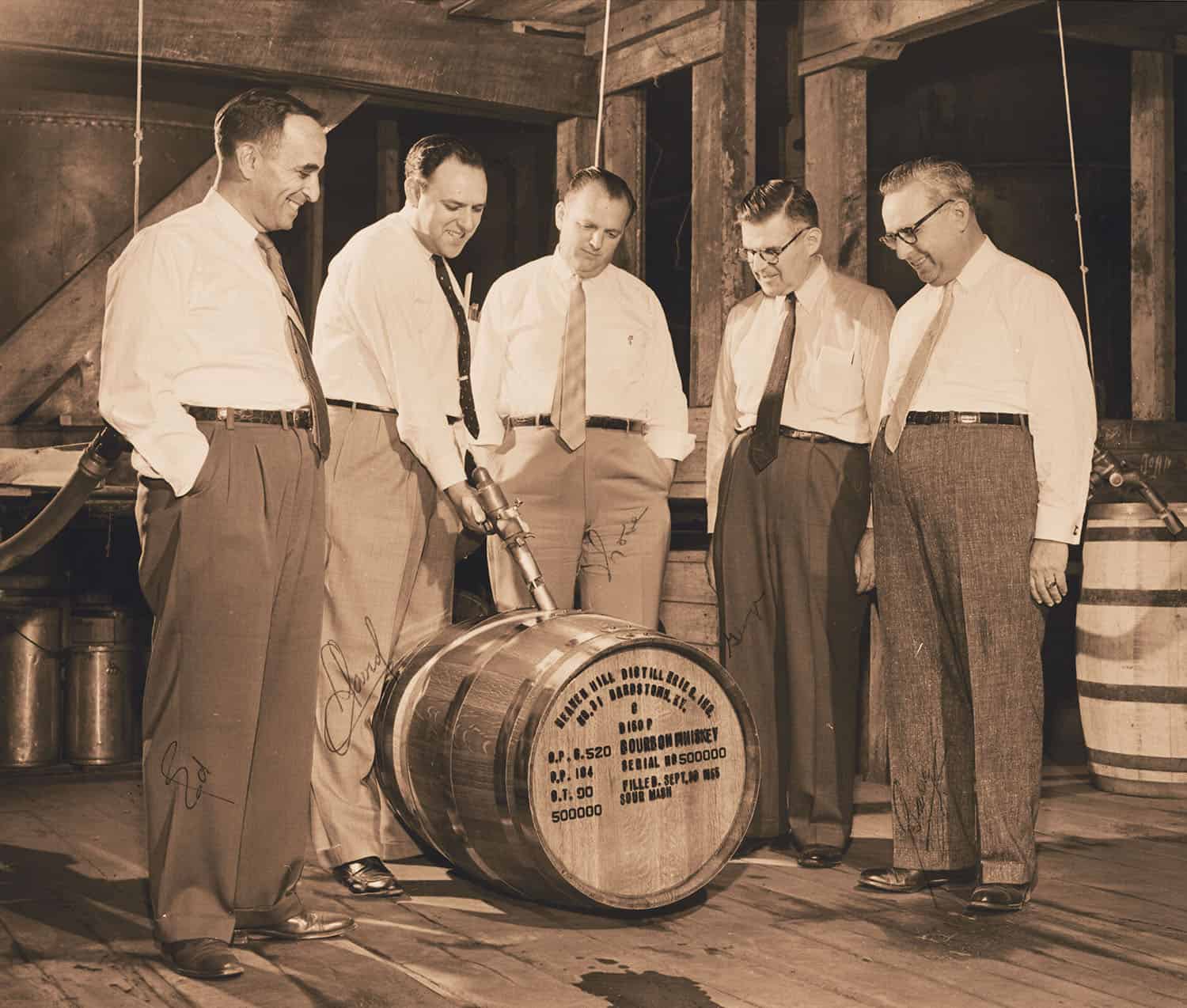
Bourbon’s First Boom and the Birth of Iconic Brands
As we surge through the current Bourbon boom, similarities abound with an earlier period of rapid expansion, which began in 1933 with the repeal of Prohibition. National Prohibition was a death knell for thousands of distilleries and breweries and an estimated 250,000 people lost their jobs when it took effect. Prohibition was an unmitigated disaster on social, moral, and legal grounds, but as with all American travesties, ingenuity and drive created a new, better industry from the ashes.
As savvy entrepreneurs saw the writing on the wall for the demise of Prohibition, they knew that a low supply of whiskey plus a high demand paired well together—if only they could build and rebuild quickly. It was Bourbon’s equivalent of the gold rush, and Kentucky was the destination. In fact, even though Kentucky was the birthplace of Bourbon, the post-Repeal boom is what really solidified Kentucky’s reputation as the Bourbon capital both because of the sharp increase of production in Kentucky and because other pre-Prohibition distilling states like Tennessee, Pennsylvania, and Maryland failed to recover like Kentucky.
When the Twenty-First Amendment was finally ratified on December 5, 1933, as announced to the nation by President Franklin D. Roosevelt, it repealed the Eighteenth Amendment and ended National Prohibition. Heritage distillers and new distillers alike were vying to meet the new demand and to pick up where the industry left off in January 1920.
Bourbon litigation picked up right where it left off, too. From the mid-1800’s through the early 1900’s, Bourbon led the nation as fertile ground for the development of trademark, consumer protection, and many other areas of the law. With the ownership of distilleries, brands, and remaining aged stock largely concentrated in a few massive corporations (National Distillers owned 45% of the existing supply and Schenley owned 25%), the upstarts had to be innovative and dedicated, and some broke the rules.
Kentucky Bourbon and history go hand-in-hand, so some start-ups without any history tried to benefit from the name recognition of pre-Prohibition brands. National Distillers—whose brands like Old Grand-Dad and Old Crow were acquired by the James B. Beam Distilling Co. in 1987—had to fend off blatant trademark infringement by an upstart at the former Frankfort Distillery near Forks of the Elkhorn, in Franklin County, Kentucky. Four months before Repeal, New York City investors bought the mothballed distillery and almost immediately they began using photographs and names of popular pre-Prohibition Bourbon historical figures and they tried to imply a connection to that heritage. National won in court, and eventually even bought the distillery, which is now Beam’s Old Grand-Dad Plant.
Another whiskey dreamer with investment money had an idea to use Kentucky’s second most famous pastime—thoroughbred horse racing. In 1933, B. J. Frentz opened “Churchill Downs Distilling Co.” in Nelson County, Kentucky, about thirty miles from Louisville. He had no connection whatsoever to the real Churchill Downs, but he used that name prominently on his bottles, along with identifying Louisville as his place of business. His label even included an image of the grandstand located at Churchill Downs, along with horses and jockeys racing on a track.
The real Churchill Downs had never agreed to the use of its name in this manner, so it sued. Mr. Frentz admitted in his testimony that he used the name “Churchill Downs” precisely because it was well-known and he hoped it would increase sales. He admitted that there was no connection with the real Churchill Downs and that he was trying to profit from the reputation of Churchill Downs. Things only got worse after those admissions; the court issued an injunction against the startup distillery for its deceptive use of the Churchill Down name and prevented any further use. After a brief stint of trying to sell just “Churchill” Bourbon, it was forced to sell.
Distillers with experience and family legacy were ready to jump back into the Bourbon business too, but they needed capital. So, the legendary Samuels family partnered with investors to reopen the T.W. Samuels Distillery. The family found success again, although they soured on their relationship with big investors, and broke off on their own during World War II, and the innovation of Bill Samuels, Sr. led to the iconic Maker’s Mark brand and its trademark dripping red wax.
The biggest Repeal success story involved hands-off investors, genuine history, and a family legacy of distilling wisdom. In 1933, Jim Beam (the person, not the brand) needed investors for his comeback and when Chicago money came calling—with a whopping $15,000—Beam sold his ownership but was sure to retain operational control. Beam’s success in distilling and the heritage of the Beam name made the investors an absolute fortune in less than a decade, and of course has grown exponentially since.
In contrast, another Repeal success story started from scratch, perhaps making Heaven Hill’s rise all the more impressive. Led by a family new to whiskey and who admittedly “didn’t know a barrel from a box,” Heaven Hill partnered with people who had the expertise—incidentally, more members of the extended Beam family—and it played by the rules, unlike the startups who tried to misappropriate heritage.
Plus, Heaven Hill took the risky and expensive step of relying on selling its own Bourbon. Within a decade, Heaven Hill’s gamble paid off in spades. It built new brands and started purchasing other brands with historic relevance, and today Heaven Hill produces 1,300 barrels per day with over 1.8 million barrels aging in 60 rickhouses.
The Kentucky Bourbon distilleries that survived through the first Bourbon boom are now leaders in the industry. Since the second expansion started in about 2010, scores of new distilleries have cropped up all over Kentucky. Just like the first boom, some of today’s start-ups are taking the route of evoking pre-Prohibition heritage; some have been sued for trademark infringement; and others have started from scratch. In the future, we’ll be looking back at the 2010’s to see which of these start-ups proved to have staying power as the next generation of this timeless Kentucky craft.

About Brian Haara
Brian Haara is a Louisville, Kentucky attorney and author of Bourbon Justice: How Whiskey Law Shaped America.
© 2020 Brian Haara